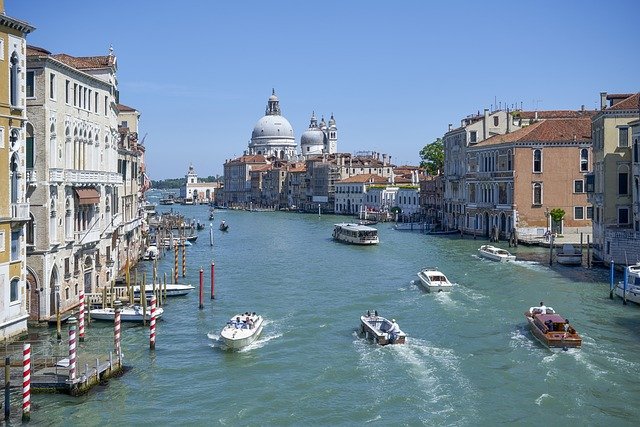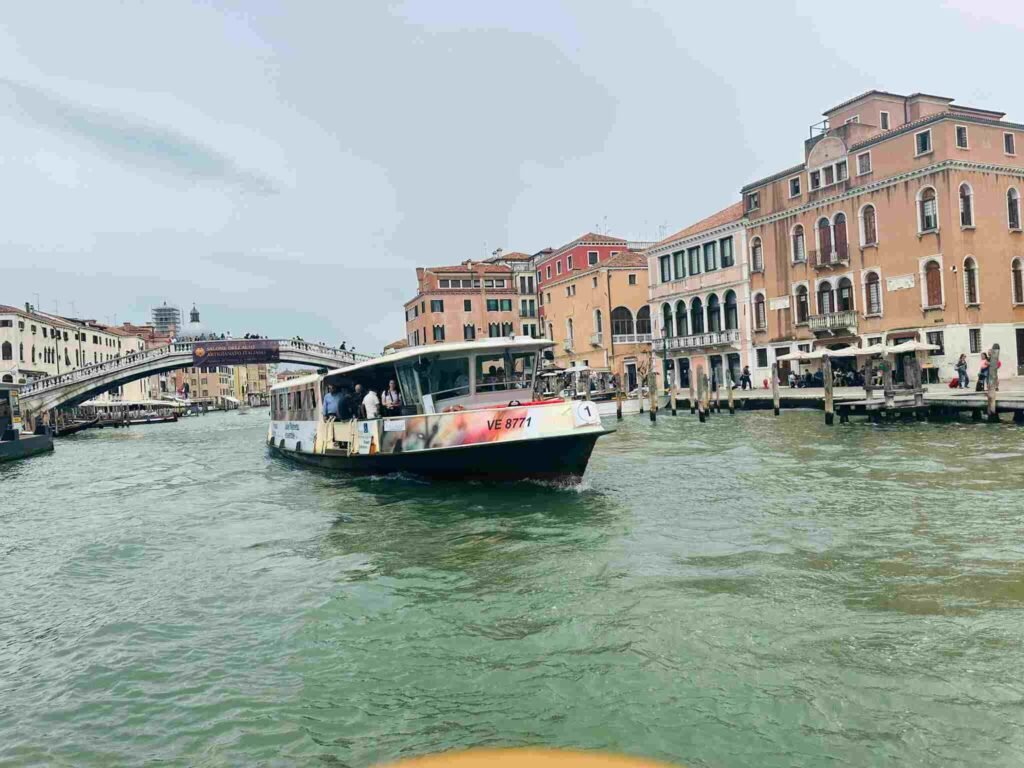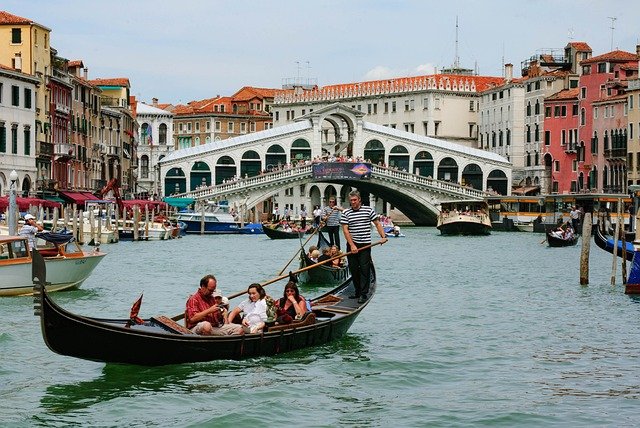Imagine living in a city where the streets are made of water and boats replace cars. This is everyday life in Venice, one of the most unique cities in the world. Venice, often called “The Floating City,” is built on a group of small islands, all connected by canals and bridges. It’s a place where water shapes everything, from how people move around to how they live their daily lives. Let’s dive deeper into what it’s really like to live in a city with canals instead of streets
No Roads, Only Water

In Venice, there are no cars, buses, or trucks. Instead, there are canals everywhere, winding between old buildings and through the heart of the city. These canals are the roads of Venice, and boats are the main form of transportation.
If you live in Venice, you don’t catch a bus; you hop on a vaporetto—a water bus that moves along the canals, stopping at different places around the city, just like buses do in other cities. There are also water taxis for faster travel and gondolas, which are long, narrow boats famous for their charm and beauty. Some people even have their own private boats to get around. This changes the way you think about travel. Instead of hearing the honk of cars, you hear the gentle hum of boat engines and the soft splash of oars.
A City for Walking
Though canals are everywhere, Venice is also a city made for walking. Narrow, winding streets lead through the city, creating a maze of paths that weave between homes, shops, and restaurants. The city has more than 400 bridges, each one connecting different parts of Venice by crossing over the canals. Some of these bridges are small and simple, while others, like the famous Rialto Bridge, are large and beautiful, with views that make you stop and admire the city.
For people living in Venice, walking is a big part of everyday life. You can’t just drive to a grocery store or take a taxi across town. Instead, you stroll through the streets, crossing bridges and passing historical buildings. Because the streets are so narrow and close together, it’s easy to get lost. But getting lost in Venice is part of the adventure. Every corner you turn reveals something new: a small café, a hidden square, or an art shop selling local crafts.
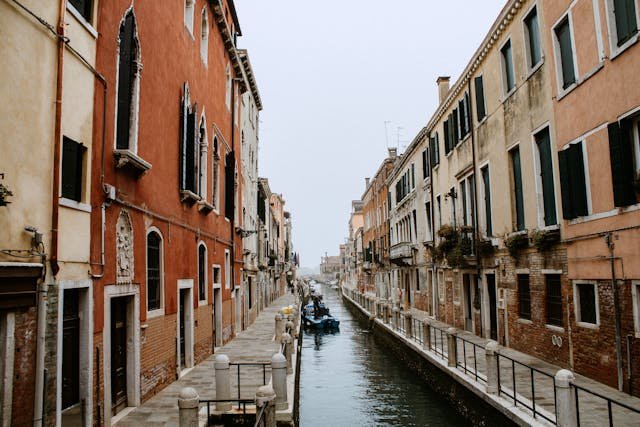
A City Without Noise
One of the things that make Venice feel so different from other cities is the silence. Without the noise of cars, trucks, and motorcycles, Venice is much quieter. The absence of traffic sounds makes the city feel more peaceful, almost like stepping back in time. Instead of the rumble of engines, you hear the gentle sounds of water: the splash of waves against the buildings, the soft thud of boats docking, and the echo of footsteps on cobblestones.
This quiet atmosphere gives Venice a special charm. Even though millions of tourists visit the city each year, the lack of motorized vehicles keeps it from feeling overwhelming. The slower pace of travel, either by boat or on foot, gives life a relaxed rhythm.
Challenges of Living with Water: Acqua Alta
While the canals make Venice beautiful, they also bring some challenges. One of the biggest problems the city faces is acqua alta, or “high water.” Acqua alta happens when the tide from the sea rises and floods parts of the city. This usually happens in the fall and winter months, and it can be quite disruptive.
During acqua alta, the water overflows from the canals and floods the streets, making it hard to walk or get around. Sometimes, the water even enters homes and shops, damaging buildings and goods. The people who live in Venice have adapted to this. In areas where flooding happens often, raised wooden walkways are set up so people can continue walking without getting wet. Locals also use special boots to walk through the flooded streets when the water is not too deep. Still, it’s a constant battle to protect the city from the rising waters, and the government has invested in large projects to prevent the worst floods.
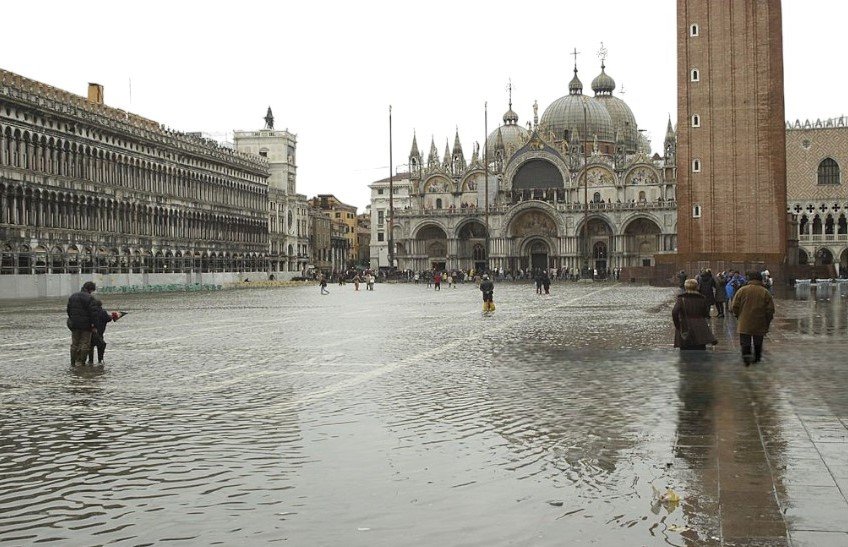
Deliveries and Daily Life
Because there are no roads, life in Venice works differently when it comes to things like deliveries. In most cities, trucks deliver food, goods, and supplies to stores. But in Venice, everything has to be delivered by boat. From fresh produce to furniture, everything arrives at the city through the canals. You’ll see delivery boats, loaded with boxes, making their way through the water, heading to shops, homes, and restaurants.
When the goods arrive by boat, they are often loaded onto carts, which are then wheeled through the narrow streets and over bridges. For big deliveries, like construction materials or large furniture, this can be a challenge. Workers have to carefully navigate the carts over bridges and through small spaces to get everything where it needs to go.
For locals, this means grocery shopping and running errands are often more of an adventure. Instead of driving to a big supermarket, people buy fresh ingredients from smaller markets, bakeries, and fishmongers. Some even take boats to nearby islands where larger stores are located.
A Slower, More Peaceful Way of Life
Venice offers a slower pace of life. Without the rush of cars and highways, people take their time getting from place to place. The beauty of the city encourages people to slow down, enjoy their surroundings, and appreciate the simple things in life. Venice is full of campi—small squares where people gather to sit, chat, and relax. These squares are the social heart of the city. Families, friends, and neighbors meet here to catch up or share a coffee in the sun.
The lack of large chain stores and modern conveniences means Venetians often live more traditionally, relying on local shops and markets for their everyday needs. The city’s rich history and stunning architecture are everywhere, and this creates a strong sense of living in a place where the past is always present.
The Importance of Preservation
Venice is an ancient city, with buildings that are hundreds of years old. The canals that make it beautiful also make it vulnerable to damage over time. The water can cause erosion, which means the foundations of buildings wear away slowly. This is why maintaining Venice is a constant job for the people who live there.
Venetians work hard to preserve their homes and the city’s historic sites. Repairs are always happening—whether it’s fixing a crumbling wall, strengthening the foundations, or cleaning the stone bridges. The government also plays a big role in protecting Venice from further damage caused by the water.
A City Like No Other
Living in a city with canals instead of streets is a rare and special experience. Venice is not like any other place on Earth. Its beauty, history, and charm make it one of the most captivating cities in the world. The daily life of a Venetian is filled with the sights and sounds of water, the peaceful hum of boats, and the joy of walking through a city steeped in history.
But it also comes with challenges—like flooding, the need for constant repairs, and the difficulty of getting around when everything has to be done by boat. Despite this, the people who live in Venice are proud to call it home. For them, the magic of the city and its slower, more peaceful way of life make it worth the effort. Living in Venice is like stepping into a living piece of history, where the water carries the rhythm of daily life, and every bridge leads to something new and beautiful.

